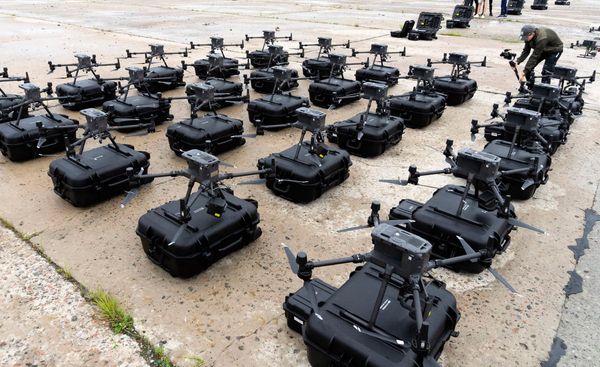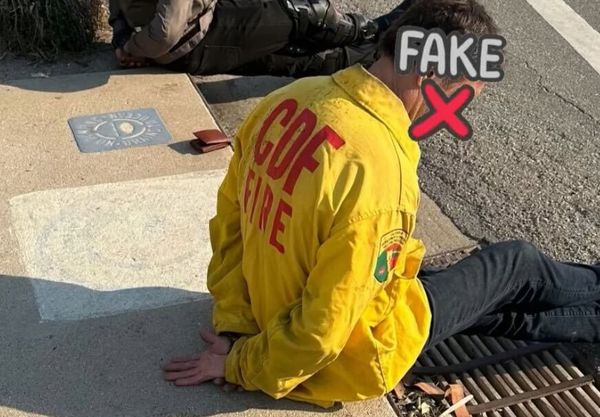
In 2017, I met Kabir Aluzai, a tall man with big hands and facial features that reminded me of the late Sean Connery. Aluzai described how his brother, Kareem, was killed in a U.S. drone strike in 2013 while on his way to sell watermelons in Afghanistan’s Wardak province, near Kabul. “Nothing was left of him. Even most of his bones were gone,” Aluzai recalled.
Aluzai introduced some of the village children around him and added that all of them knew the sound of Predator drones. “They can distinguish between drones, helicopters, and fighter jets. They know when to play outside and when not. They are traumatized—we all are,” he added. Like many other rural parts of Afghanistan, Aluzai’s home district was controlled by the Taliban. Most of the drones, however, did not kill the insurgents, but civilians: farmers, merchants, miners, or—most disturbingly—children.
Under the Obama administration, Afghanistan became the world’s most drone-bombed country. President Barack Obama also expanded clandestine wars in countries where the United States was not officially at war, such as Pakistan, Yemen, and Somalia. In most of these countries, Obama’s drone wars fueled more extremism, militancy, and anti-American sentiment.
In 2015, the United Nations reported that Obama’s drones had killed more civilians in Yemen that year than al Qaeda did. In Pakistan’s tribal areas, adjacent to the porous border with Afghanistan, most drone strikes did not kill militants. In 2014, the London-based Bureau of Investigative Journalism found that less than 4 percent of all identified drone victims in Pakistan were actually militants affiliated with al Qaeda. The cases of Obama’s many innocent victims remain unknown. Tariq Aziz, a 16-year-old anti-drone activist from North Waziristan who was killed while driving a car, was one. Momina Bibi, a grandmother torn to pieces by Obama’s drones in her backyard in front of her grandchildren, was another such case.
In Obama’s recently published memoir, A Promised Land, even readers who search extensively will be hard-pressed to find any mention of innocent victims or feelings of remorse. Instead, the former U.S. president prefers to defend and whitewash his drone campaign by solely describing those killed as “dangerous.”
“They were dangerous, these young men, often deliberately and casually cruel. Still, in the aggregate, at least, I wanted somehow to save them—send them to school, give them a trade, drain them of the hate that had been filling their heads. And yet the world they were a part of, and the machinery I commanded, more often had me killing them instead,” Obama wrote.
Obama’s self-righteous words do not reflect on-the-ground realities. Leading human rights organizations from all over the world regularly criticized the effects of drone strikes and the massive civilian casualties they caused. Contrary to the imagination of Obama and many other politicians and military officials, drones are not precise weapons that only kill arbitrarily defined “bad guys.” In fact, the vast majority of designated terrorists, like al Qaeda and Taliban leaders, were not killed.
Taliban supreme leader Mullah Mohammad Omar, the target of the very first drone strike in U.S. history in late 2001, was never killed by any of the Predators and Reapers that hunted him. Many years later, in 2013, he died of natural causes not too far from a U.S. military base in southern Afghanistan, with the rest of the world only finding out two years later. It’s a similar story with other figures like Ayman al-Zawahiri of al Qaeda or Jalaluddin Haqqani of the Taliban.
Yet in his memoir Obama ignores these facts while praising “more targeted, nontraditional warfare” and, “unlike some on the left,” as he writes, embracing parts of his predecessor George W. Bush’s controversial counterterrorism doctrine. Compared to the Bush era, drone strikes in Pakistan, Somalia, and Yemen increased tenfold under Obama, while his “kill list,” which he personally signed off on each “Terror Tuesday,” became notorious.
As a former member of Obama’s administration, President-elect Joe Biden might be keen to carry on the drone program, in a manner not too different from that of his onetime boss. In Afghanistan, for example, Biden might continue outgoing President Donald Trump’s withdrawal plans, but it is hard to imagine that clandestine forces and Predators will stop operating and killing people there. It’s also unrealistic to assume that America’s shadow wars in Africa, which increased heavily under both Obama and Trump, will decrease.
However, Biden should rethink the devastating counterterrorism policies of his predecessors. In the eyes of many people around the world, America’s drone war has become a symbol of injustice, oppression, and impunity that led to both global and local radicalization of Muslim populations who are living with the consequences.
Extrajudicial drone strikes have also led to questioning of the rule of law itself and the notion of a presumption of innocence—something that did not exist for Kareem Aluzai and all the other countless drone victims. The rule of law stands as a crowning achievement on which many Western societies pride themselves, but it is undermined by Western leaders championing the concept to justify their foreign misadventures.
For those on the ground living beneath the drones, such lofty concepts provide little solace. To the Predators, they are visible only as targets—and invisible to the world once they die.







